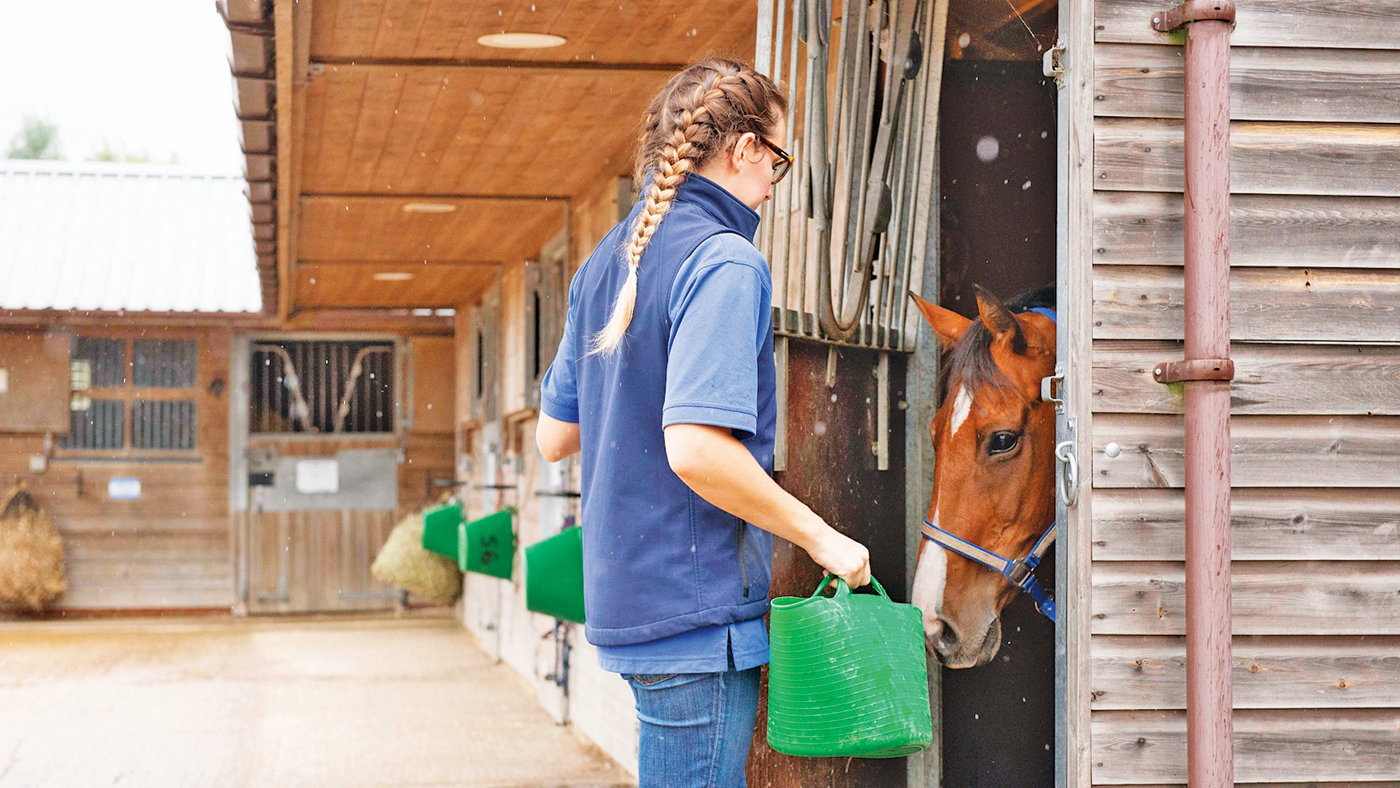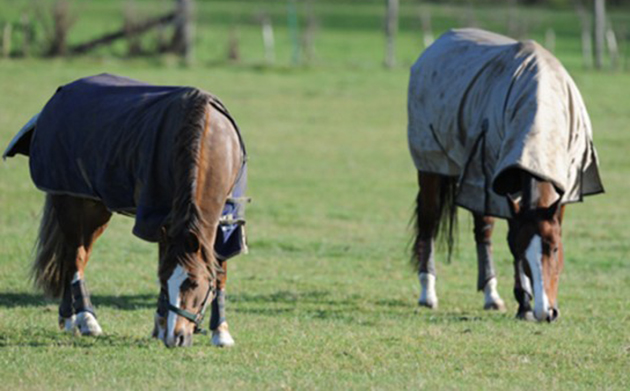Rebecca Hamilton-Fletcher MRCVS discusses the welfare rules surrounding horses for hire
RIDING establishments are an integral and much-loved part of British equestrianism. Many of us started our equestrian “journey” at the local riding school, and these establishments play a vital role in ensuring that riding remains accessible to all.
Even at the best of times, however, managing a riding establishment involves immense hard work with minimal financial return. Covid-19 has added to this somewhat precarious existence.
As restrictions are lifted, establishments that have survived are preparing for a busy summer. How do these businesses routinely manage the health and welfare of their animals?
STRICT STANDARDS
A RIDING establishment (RE) is any business that hires out horses for riding or instruction in riding, or both. In addition to riding schools, REs include operations such as trekking centres and polo schools, and those offering hunter hirelings and beach donkeys. A raft of legislation in place is underpinned by the Animal Welfare Act 2006, to protect the welfare of the animals used and the health and safety of clients and employees.
All REs are required to be licensed. This involves a rigorous annual inspection which must be carried out by a trained and listed veterinary inspector, often with a local authority inspector.
Strict minimum standards must be met for a licence to be issued or renewed. Any animals deemed not suitable – those that are unsound, for example – will not be included on the licence at this stage. In England, where additional regulations mandate extra criteria be met, a star rating system rewards REs of a particularly high standard.

Inspection of the horses is welfare-driven and focuses on those areas most at risk, especially given that many REs favour older animals. Any judgements made are always in the context of the animal’s role; will he be hunting twice a week, or is he a Riding for the Disabled Association pony and only ever required to walk steadily around the school?
Health records must be kept for every horse or pony, detailing the routine monitoring of his weight and condition score, along with dentistry, worming, farriery and tack checks, and any health problems or non-routine veterinary treatment.
The veterinary inspection concentrates on key areas:
General condition: is the animal in optimum condition for his workload? Many traditional REs use native pony types, prone to gaining excess weight.
Appearance and demeanour: a “happy” animal speaks volumes.
Musculoskeletal system: it is important to differentiate between a degree of initial stiffness, which may be acceptable, and obvious lameness. A good overall standard of footcare is also required.
Back health: any evidence of a sore back warrants careful assessment of both the saddle fit and the RE’s policy for horse:rider bodyweight ratios.
Eyes and heart: cataracts and other visual issues are common findings within an older equine population. Most animals seem to work normally with a degree of visual impairment, but rider safety is paramount. It may be necessary to impose restrictions, such as no roadwork. Heart murmurs are generally less of a concern in an otherwise healthy animal, but require careful monitoring.
Coat and skin: ideally an animal has a well-groomed, healthy coat, with no sign of abrasions or galls.
Tack: this should be clean and well maintained. Horses are inspected tacked up, with attention paid to correct fit, safety and general wear and tear.

COMPLEX CHALLENGES
WHILE much of this may appear straightforward to the individual horse owner, the many variables within an RE’s remit add further complexity to the management challenges – and also to the workload of the animals involved.
Varying levels of fitness may be required, for example. The frequency of work comes into play, as a balance is maintained between keeping a horse fit enough for irregular hours or seasonal work, without him being overly fresh at any one time.
Contingency plans must be in place to provide cover for ill or injured horses, or during unseasonal weather. In addition, provisions must be made for riders of varying size, weight and fitness, and also individual expectations, experience, ability, coordination and balance.
Rider variables are challenging to cater for. Preliminary work has shown that a heavier rider can induce temporary lameness in a horse, together with behavioural indications of musculoskeletal pain, when compared with a lighter rider. This may be further compounded by inadequately fitting tack.
The vast majority of RE horses have just one saddle, which is expected to suffice for all riders. This is obviously far from ideal, given the potential welfare implications. RE managers increasingly use horse:rider bodyweight ratios when allocating rides, but this needs to be managed sensitively. There is still a lack of scientific evidence on which to base guidelines.

The extra challenges created by lockdown have added to the demands of running an RE. The sudden requirement to lay off fit horses has meant reducing hard feed, increasing forage and making good use of turnout where possible, all the while keeping them ready to return to work at short notice.
Where winter turnout has been restricted, some proprietors have used horse walkers and arena turnout to manage the inevitable age-related stiffness in older horses. Those with turnout have handled and groomed horses daily to prevent them from becoming “herd feral”.
On the plus side, many have seen this as an opportunity to spring-clean their premises and carry out maintenance and renovations. It will have been time well spent once their gates are open to the general public once again.
Managing the multi-horse yard

RIDING establishment licensing requirements include multiple protocols and extensive record-keeping. Once in place, these systems are an incredibly helpful management tool which can benefit any yard with multiple horses and owners.
A similar plan for a private yard might include:
Health care
- A vaccination programme to promote herd immunity.
- Parasite control, based on targeted de-worming.
- Regular farriery and dental assessments.
Nutrition
- Wall charts detailing individual feeding plans.
- Regular recording of bodyweight and condition score.
- Robustly labelled feed containers.
Biosecurity
- Assessment and screening of new arrivals: appropriate isolation for diseases such as strangles, de-worming and careful herd integration.
- Monitoring of usual residents: regular temperature taking, recording of unusual behaviour such as reduced appetite or droppings, and close inspection on return from competition.
- Suspected disease outbreak: immediate isolation, twice-daily temperature taking, strict hygiene measures and veterinary involvement.
Yard maintenance
- Ongoing cleaning, fencing repair and pasture management.
Health and safety
- Emergency contact numbers and fire procedures on display.
- Well-equipped first-aid supplies.
- Suitable containment of prescription-only medicines.
This feature is also available to read in this Thursday’s H&H magazine (8 April, 2021)
You may also be interested in…

Individual or group turnout for horses: what’s the verdict?
Whatever your preference or circumstances regarding turnout, it is important to look at your horse as an individual and make

Calling the vet out of hours: what you need to know *H&H Plus*

‘I hate it! Until it’s over’: real life for grooms of superstar horses

Does your horse really need to wear a rug?
